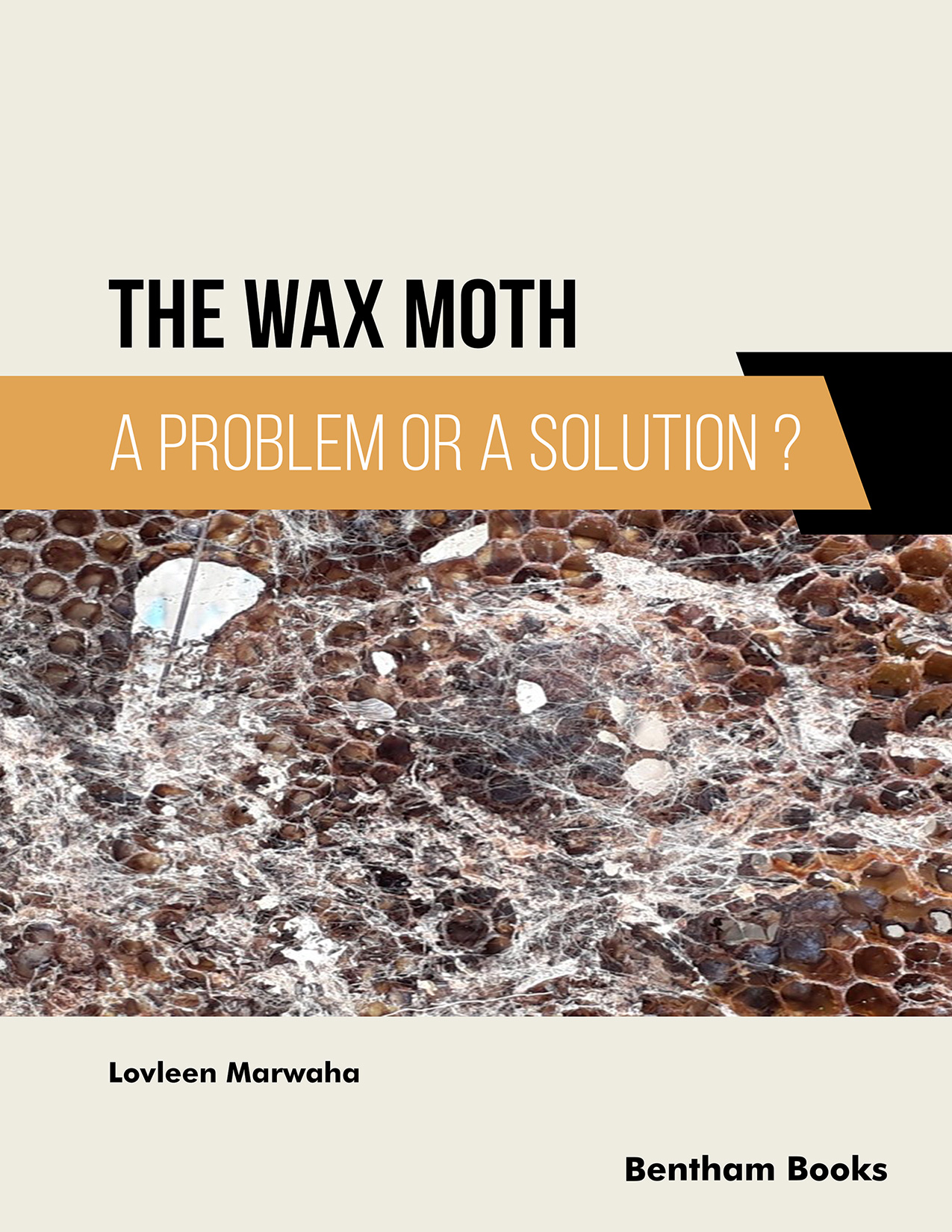The book Wax Moth: A Problem or Solution? has been written especially for B.Sc.,
M.Sc., and Ph.D. students, bee-keepers, and academicians highlighting various
aspects of the wax moth life cycle. Although certain books are available on various
pests, pathogens, and predators of the honey bees, very limited information is
available on the wax moths. The wax worms are devastating pests of food commodities
and the beekeeping industry, which results in great economic loss globally. The wax
moth invades the bee colony, proliferates, reproduces, and destroys the colony,
forcing the original occupant to abandon the hive. Its biotic potential is
regressive, which overpowers the dominance and hold of honey bees in hives.
Different control strategies help in dealing with the challenging infestation of a
concerned pest, but those also influence apicultural products.
The wax moth possesses the potential to degrade different types of plastics. A few
research explorations are available that witness this exceptional ability of the
above-cited insect. The present book highlights the specific characteristics and
uses of the wax moth to resolve challenges of the human population. For the
completion of this book, a vast review of the literature has been carried out, and
this book carries the latest information related to the distress pest of honey bees.
During the preparation of this book, authenticated information from various research
papers, review articles, and other books has been considered. While practising
apiculture, the challenge imposed by wax moths for beekeepers has been observed.
This has motivated the compiling of available information about the wax moth in one
book. Images incorporated in various chapters are original, having been clicked
while maintaining an infested honey bee colony.
Currently, different synthetic chemicals are used that no doubt control wax moth
infestation but impose an insecticide contamination problem in apiculture products.
On one hand, excessive synthetic chemical application induces insecticide resistance
in pests, and on the other hand, these chemicals degrade the nutraceutical value of
natural bee products. Therefore, the challenging need for this pest control and the
right use of this specific pest acted as triggering factors for the completion of
this comprehensive book.
The concerned books elaborate on the general introduction, morphology, development,
pheromonal profile, mating, reproduction, control, and plastic degradation
characteristics of specific pests. With these features, it is hoped that this book
will be a complete guide for meeting the needs of the students. A special thanks to
Prof. Neelima R. Kumar, Department of Zoology, Panjab University, Chandigarh for
providing immensely valuable suggestions while drafting the book.
CONSENT FOR PUBLICATION
Not applicable.
CONFLICT OF INTEREST
The author declares no conflict of interest, financial or otherwise.
ACKNOWLEDGEMENT
Declared none.
Lovleen Marwaha
Department of Zoology
School of
Bioengineering and Biosciences
Lovely Professional University
Phagwara, Punjab
India

